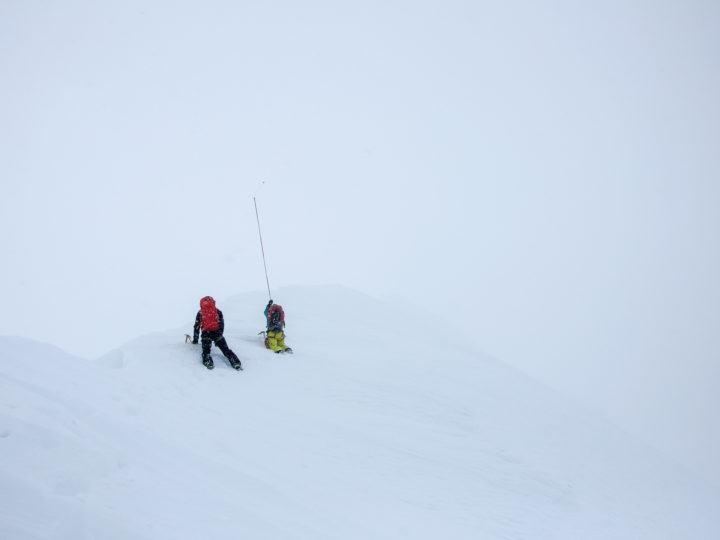I’ve heard of a few people from time to time who considered putting up some kind of tower at their homes for practising ice climbing between outings. That even goes back to the 1970s when a few of us in the North West Mountaineering Club in Edmonton tossed around ideas for building a tower behind the Hostel Office and the Mountain Shop. We had it in mind to get 3 power poles drilled in, covered with chicken wire, and sprayed with water — continually.
But we quickly realized what a big job the initial construction would be, then the maintenance, safety and security, dealing with complaints from neighbors, and so on, and came to our senses. Also we did scout out a number of ice flows in the river valley, usually at storm sewer exits, and occasionally went out for a few hours of icey fun and exercise close to home, especially rappelling down steep banks to the ice, and later climbing back up them to our cars. And we did manage to get in a bit of ice climbing as well as experimenting with equipment and our systems.
Since then I moved to Calgary and have been a lot closer to real ice climbs that can even be reached conveniently in an evening, accepting the usefulness of a headlamp for the later stages of each outing.
But sometimes even an hour’s drive to reach the ice is too much, especially in bad weather or when we’re very busy while maybe working up to a tough weekend climb. So the idea of a training tower at home still has its unavoidable appeal.
When I moved to an acreage in 1996, I acquired my own forest of 20-metre trees as well as privacy. The concept of a climbing tower suddenly seemed much more practical. After some busy time dealing with more urgent issues of a new home, I considered the climbing tower subject again and rendered it down to its basic elements for efficiency.

Ice Training Ladder — No Ice Needed
I had been climbing ice for many years by that time, so the feel and environment of ice climbing was pretty much like riding a bike — I get right back in to it and quickly feel comfortable. But what I lose between real climbs is the physical training — that can’t be denied. Then I realized that most of it is my arms, so I put up a vertical wooden ladder 36 ft high, between a couple of my trees, with reinforced rungs at staggered spacings of 8″, 12″, and 16″, and a top rope. I would climb it with my ice tools, but there would be no ice, no whacking, and no crampons. The belay rope is kept in a bucket at its base between uses.
My ‘ice tower’ ladder turned out to be even slightly overhanging, and with stepping on the rungs with shoes rather than crampons in ice, my feet are farther forward and put my centre of gravity farther back than on vertical ice, so putting more load on my arms.
With a 36-foot ladder, I can fairly claim 30 feet of usable height, as my tools start about 6 ft off the ground. But a much shorter one could still be useful. For example, a 10-ft ladder might be more practical in the city, and would eliminate the need for a top rope.
The ladder remains for ice training to this day and is very effective. I’ve had a few friends visit, with the suggestion to bring along their harnesses and tools, and they are invariably polite but act skeptical and maybe disdainful of the wooden ice-climbing ladder, but about halfway up on their first lap they are looking down and saying “Wow, I see what you mean.”
I suggest people climb down as well as up, and that’s what I do myself. If I’m on my own, I’ll use a Tibloc on the top rope for the trip up, then often change it to a prussik at the top for the descent. Downclimbing and the equipment handling adds to the exercise, and I equate a round trip to 30 metres of steep ice climbing.
A few laps on this ladder in the day or two before an ice climb provide an excellent tuneup for the arms and self-confidence, yet right outside my door.
Orvel
0 Comments
Leave a reply
You must be logged in to post a comment.






